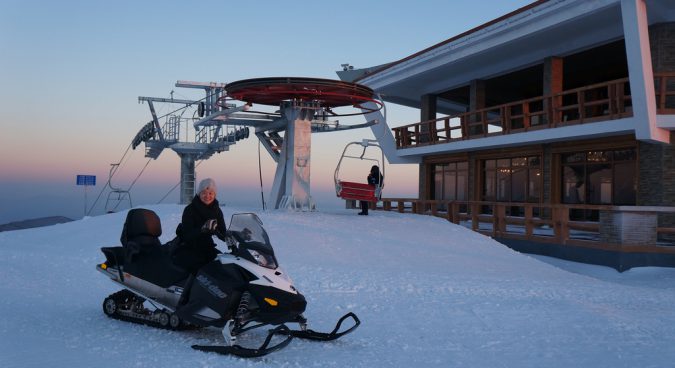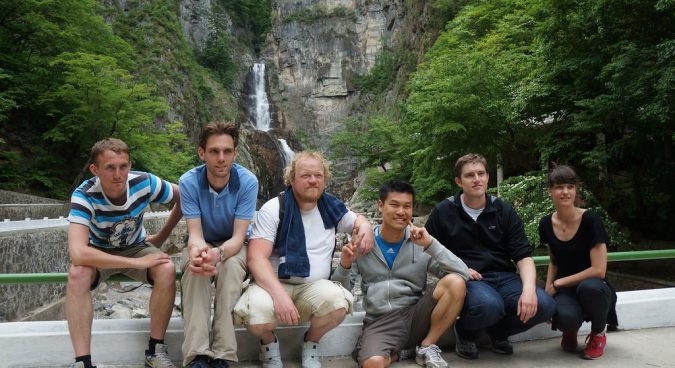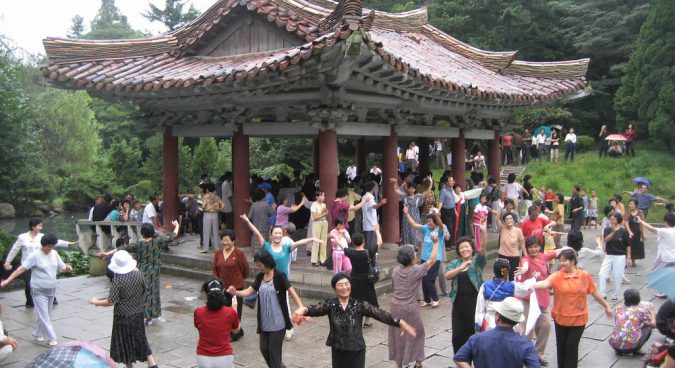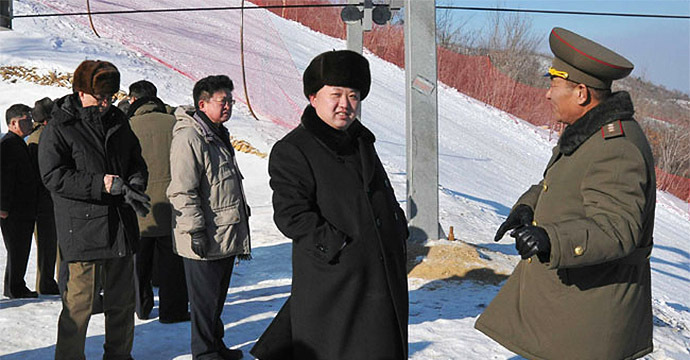Why North Korea’s dreams of becoming a tourism hotspot were always doomed
Disclaimer: this piece was written before the tragic news of Otto Warmbier’s death.
Every North Korean watcher remembers a number of instances when international media began to write (at great length and with genuine enthusiasm) about some imminent dramatic change in North Korea’s policy, usually implied to be the start of a miraculous transformation of the country into a wonder of East Asia.
One such example of this appeared in 2015, with reports of an imminent tourist boom. The North Korean government had made public its intention to dramatically increase the number of foreign tourists visiting the country. In May that year, a North Korean scholar/official informed foreign media that the country hoped to host some two million tourists by 2020.
This news was widely discussed in the world media, not least because the words ‘North Korean tourism’ are often perceived as an oxymoron. Indeed, North Korea is hardly seen as a major tourist destination, even if the widespread clichés about the country that might discourage visitors are often wrong.
BIG INVESTMENTS
Back then it was clear that the North Korean authorities meant business when they talked about tourism development, and were willing to invest a significant part of their meager resources into projects whose only conceivable goal was to increase the number of tourist arrivals.
For a while, Masik ski resort was considered the country’s major construction project
Among other things, Pyongyang International Airport was renovated on a grand scale (quite a luxury for a hub which boasts 4-5 flights a week), while another large airport is being built in Wonsan on the eastern coast. This project, located in an area with virtually no traffic, makes sense only in connection with the massive ski resort which was developed in Masik area, some 20 km from Wonsan.
For a while, the Masik ski resort was considered the country’s major construction project, with North Korean newspapers flooded with reports about the heroic and selfless deeds of the shock workers – it was somewhat comical to see how the construction of a luxury resort was reported in language the media usually reserves for building steel mills or tank factories.
The resort, complete with a luxury hotel, restaurants, ski lifts and other equipment, was a very expensive undertaking indeed. Reportedly, its cost was close to $35 million, even though this figure, like pretty much all published statistics about North Korea, should not be taken too literally. Given the near complete absence of demand for such venues inside North Korea, the Masik project was clearly targeting foreign visitors.


There were even more ambitious plans – like an underwater hotel, announced and briefly discussed in 2014. Construction never started, and it was also supposed to be built in Wonsan, not far from Masik.
TOTAL FAILURE
What has happened to these grand plans now? Quite predictably, the tourism development schemes ended in complete failure – and, equally predictably, the international media was not in any hurry to report this. The number of visiting tourists in 2016 was close to 100,000, and in 2017 it is likely to shrink, so the ambitious goal of attracting one million visitors now looks like a joke mercifully forgotten by all, including the journalists who once fell for the hype.
This failure was predictable and predicted: North Korea, objectively speaking, had very little chance of becoming a major international tourist destination.
To start with, its climate is not quite suitable for an international destination. When it comes to beaches and palm trees, it stands no chance of competing with Thailand and other countries, where the sea is warm 365 days a year. Kim Jong Un’s dreams of ski resorts, obviously the result of his golden teenage years spent in Switzerland, are also unlikely to come true: there are far better places to go skiing.
North Korea, objectively speaking, had very little chance of becoming a major international tourist destination
The historic treasures of Korea are, frankly speaking, of rather limited appeal. When it comes to ancient temples and old palaces, it is lagging well behind Japan, let alone China. Koreans might feel patriotic about their cultural heritage, but their enthusiasm is not widely shared by outsiders, who will always opt for Kyoto or Suzhou. This is a problem even in South Korea, where the allure of the ‘Korean Wave’, combined with skillful marketing and large-scale restoration projects, has largely ameliorated the problem.
However, North Korea’s major obstacle is the need to maintain strict control over all foreign visitors. North Korean leaders believe (correctly) that free interaction between locals and foreign tourists, unless the locals in question are selected, trained and monitored properly, is harmful to the regime’s legitimacy and the country’s political stability. This means that visitors are subjected to a number of restrictions, and in many cases are essentially confined to the hotels, restaurants and other facilities which are off limits for the locals.
Last but not least, tourism infrastructure remains highly underdeveloped, while prices are high: as foreign tour operators are aware, it costs significantly more to send a customer to Pyongyang than to Seoul.
This means that Kim Jong Un’s dreams of turning his country into a tourist paradise were doomed from the very beginning. Obviously, the North Korean leader was influenced by what he saw in Switzerland and believed that tourism might become a miraculous way to raise living standards. This option looked easy, cheap, and politically safe (on the assumption, of course, that tourists would be happy to behave as instructed).


WHO GOES TO NORTH KOREA?
This does not mean, however, that North Korea has had no visitors whatsoever. While statistics are, as is usually the case with Pyongyang, murky and unreliable, it seems that in 2016 some 100,000 foreigners visited the country (North Korean side claims a much higher number). Most of them, however, were Chinese, who comprised roughly 95% of the total. The number of non-Chinese tourists is estimated to fluctuate around 4000-5000 visitors a year. The income the North Korean state obtains from the tourist industry is said to be between $30 and $45 million. This is a small amount, even by the modest standards of the North Korean economy.
Kim Jong Un’s dreams of turning his country into a tourist paradise were doomed from the very beginning
Foreign tourists overwhelmingly come on package tours, and are always carefully watched by both North Korean tour guides and tour company representatives (the latter do not want to get into trouble and are eager to enforce numerous regulations). They visit some politically important monuments, like the Juche Tower or Kim Il Sung’s birthplace at Mangyondae, but tour programs also include ancient remains (not necessarily authentic), and wonders of nature.
There are two main reasons why Chinese tourists go to North Korea. Most of them see North Korea as an affordable but exotic destination. Compared to other countries, a trip to North Korea is cheap, but it still gives a Chinese visitor the thrill of being overseas – and the related photo opportunities. Many tourists come to North Korea on very short trips – for example, in Dandong one can purchase a tour to Sinuiju (on the opposite bank of the Yalu River) which lasts, effectively, five or six hours.
A day-long trip costs some 700-1000 yuan ($102.81 – $146.88), while a standard long program, five or six days in Pyongyang, would cost 3000-5000 yuan ($440.63 – $734.38). Apart from Pyongyang, Chinese tourists also visit Kaesong, Nampo and Wonsan, but it seems that many of them prefer trips to the picturesque mountains close to the border with China (especially Paektu).
Another draw is political curiosity. Chinese neo-Maoists have made North Korea one of their symbols: blissfully and willfully unaware about the deep changes inside the country, they extoll it as an egalitarian paradise where order and social justice reign supreme. One neo-Maoist group even makes a small income by selling tours to North Korea. On the other hand, those on the opposite end of the political spectrum have a keen interest in North Korea, which they see as a political theme park, a living fossil from the era they despise but still feel interested in. Some others are attracted by the nostalgic value of the trip – to Chinese visitors in their 50s and older, North Korea looks like the China of their childhood and youth.
The case of Otto Warmbier may be a game changer
The majority of the Western tourists are attracted by similar feelings: they go to North Korea because of its bizarre reputation, to “experience” life in what they consider the last relic of the bygone Communist era – or, at the very least, something unusual – it also helps that such a visit gives a tourist many opportunities to brag about his or her “risky adventure.” Of course, when it comes to risks, if one follows the rules and does not start arguments, Rome is probably a more dangerous place to visit than Pyongyang, but this hardly matters – people love to play James Bond in their imagination.


SENSE OF AN ENDING
The case of Otto Warmbier may also be a game changer. A formal ban on tourism by Americans looks increasingly likely and, perhaps, long overdue, even though it was clearly the student himself who is responsible for his situation. But even if a formal ban is introduced by the U.S., it will have little impact on visitors from other Western countries – and also, the economic significance of such measure is not going to be large, since the Western tourists bring only a fraction of the North Korean tourist revenue, and Americans are almost unnoticeable.
North Korea is, essentially, a niche market, and likely to remain such – as the recent unheralded debacle of Pyongyang’s ambitious plans demonstrated once again. The average international tourist is not going to visit the country, with its low comfort level and, frankly, dearth of attractive sites, but also because the total control and manifold restrictions are hardly appealing.
In its present state, tourism can hardly be seen as a major income earner for the North Korean regime
North Korea is bound to remain a destination for those who are attracted to the bizarre and unusual, who have enough spending money (it is not cheap), or have political agendas and/or interests. It is telling that the number of non-Chinese foreign visitors has dwindled to the level of 4000-5000 a year – it seems that this remarkably stable figure indicates how many such people can be found worldwide in the average year.
A decline in the number of Chinese visitors would be a much greater challenge for Pyongyang– and there are some signs that such a thing did happen recently, perhaps, as a result of Chinese government policy. Nonetheless, in its present state, tourism can hardly be seen as a major income earner for the North Korean regime – and, due to the spectacular failure of the ambitious expansion plans, it is unlikely to become one in the near future.
Edited by Oliver Hotham
Featured image: Rodong Sinmun

No comments:
Post a Comment